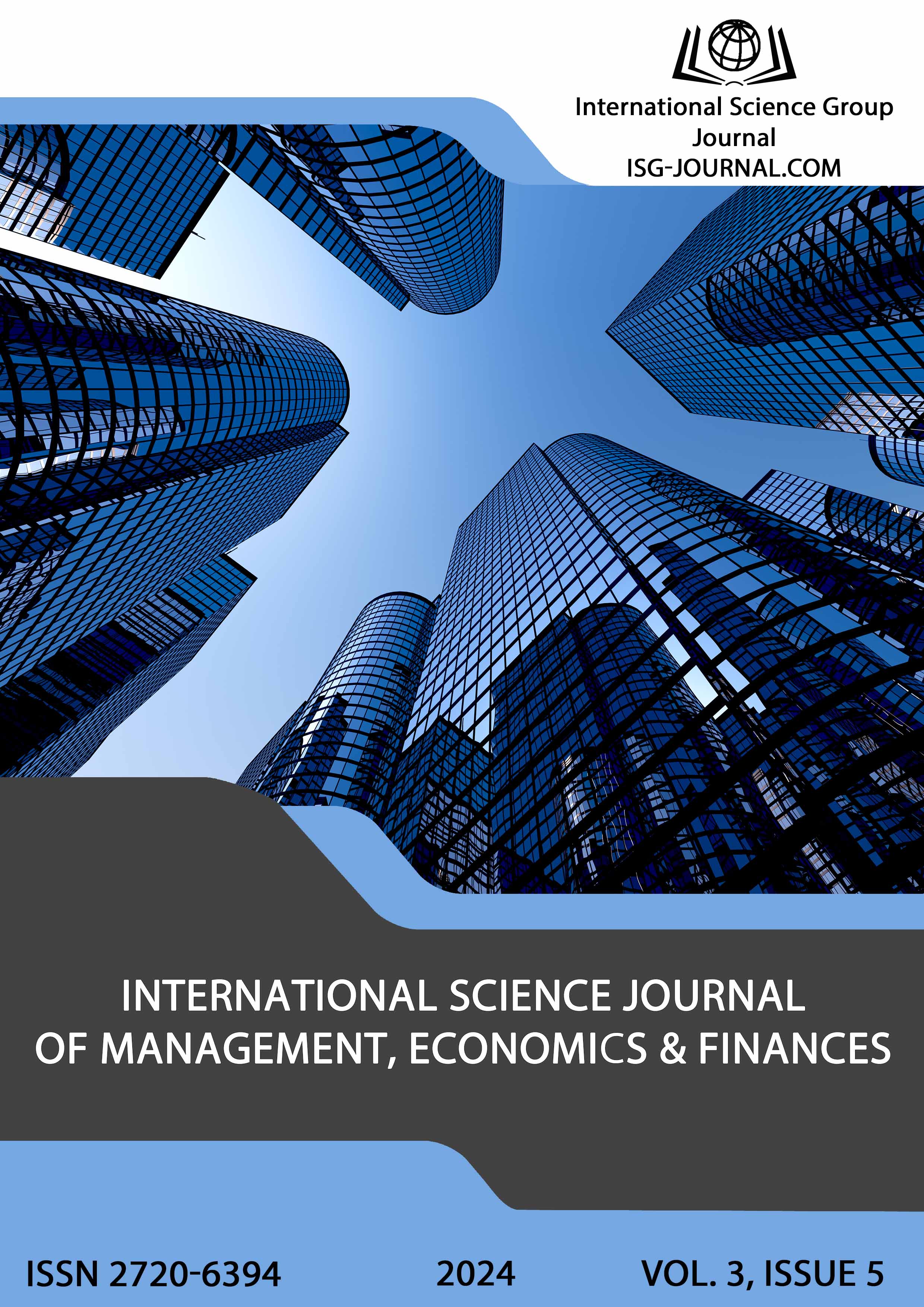System cycle of human resources-knowledge-capital for innovation: concept, main components, and characteristics
DOI:
https://doi.org/10.46299/j.isjmef.20240305.07Keywords:
innovation, human resources, knowledge, capital, systemic cycle, innovation ecosystemAbstract
This paper explores critical aspects of the innovation process, specifically the role of human capital, knowledge, and investment in ensuring effective innovation development. Despite significant achievements in this field, existing research has notable shortcomings, as human capital and knowledge exchange alone do not guarantee successful innovation outcomes. A key condition is the involvement of capital. Analysis of scientific sources demonstrates the importance of investment in the innovation process, emphasizing its significance for competitiveness and sustainable economic growth. Specifically, investments in research and development (R&D) are crucial for the creation of new products and services, while venture capital supports the financing of innovative projects despite high risks. Digital technologies also play a significant role in enhancing business efficiency, reducing costs, and increasing customer satisfaction. Government support for innovation policy is also important, as it stimulates investment and fosters the development of competitive markets. The study proves the necessity of a systematic approach, where human resources, knowledge, and capital interact and interconnect, ensuring a cyclical innovation process. This includes the mobilization and management of critical resources to sustain a continuous innovation cycle. The paper compares the concepts of the “innovation ecosystem” and the “systemic cycle of human resources, knowledge, and capital for innovation.” The innovation ecosystem involves interactions between various organizations and institutions that promote innovation, whereas the systemic cycle focuses on internal processes and resource management within organizations. The study's conclusions highlight the importance of both approaches for understanding and optimizing innovation processes.References
Cohen, W. M., & Levinthal, D. A. (1990). Absorptive capacity: A new perspective on learning and innovation. Administrative Science Quarterly, 35(1), 128-152. https://www.researchgate.net/publication/220019726_Absorptive_Capacity_A_New_Perspective_on_Learning_and_Innovation.
Nonaka, I., & Takeuchi, H. (1995). The knowledge-creating company: How Japanese companies create the dynamics of innovation. Oxford University Press.
Lundvall, B. A. (1992). National systems of innovation: Towards a theory of innovation and interactive learning. Pinter Publishers.
Hinds, P., & Kiesler, S. (Eds.). (2002). Virtual teams and knowledge sharing. In Distributed work. Boston Review. https://doi.org/10.7551/mitpress/2464.001.0001
Gilson, L. L., Maynard, M. T., Jones Young, N. C., Vartiainen, M., & Hakonen, M. (2015). Virtual teams research: 10 years, 10 themes, and 10 opportunities. Journal of Management, 41(5), 1313-1337. https://doi.org/10.1177/0149206314559946
Bontis, N. (1999). Managing organizational knowledge by diagnosing intellectual capital: Framing and advancing the state of the field. International Journal of Technology Management, 18(5/6/7/8), 433-462. http://dx.doi.org/10.1504/IJTM.1999.002780
Powell, W. W., Koput, K. W., & Smith-Doerr, L. (1996). Interorganizational collaboration and the locus of innovation: Networks of learning in biotechnology. Administrative Science Quarterly, 41(1), 116-145. http://dx.doi.org/10.2307/2393988
Ferraris, A., Santoro, G., & Dezi, L. (2017). How MNC’s subsidiaries may improve their innovative performance? The role of external sources and knowledge management capabilities. Journal of Knowledge Management, 21(3), 540-552. https://doi.org/10.1108/JKM-09-2016-0411
Gonzalez, R. V. D., & Martins, M. F. (2014). Knowledge management: An analysis from the organizational development. Journal of Technology Management & Innovation, 9(1), 131-147. https://doi.org/10.4067/S0718-27242014000100011
Subramony, M., Segers, J., Chadwick, C., & Shyamsunder, A. (2018). Leadership development practice bundles and organizational performance: The mediating role of human capital and social capital. Journal of Business Research, 83, 120-129. https://doi.org/10.1016/j.jbusres.2017.09.044
Verhoef, P. C., Broekhuizen, T., Bart, Y., Bhattacharya, A., Dong, J. Q., Fabian, N., & Haenlein, M. (2021). Digital transformation: A multidisciplinary reflection and research agenda. Journal of Business Research, 122, 889-901. https://doi.org/10.1016/j.jbusres.2019.09.022
Cillo, V., Rialti, R., Bertoldi, B., & Ciampi, F. (2019). Knowledge management and open innovation in agri-food crowdfunding. British Food Journal, 121(2), 242-258. https://doi.org/10.1108/BFJ-07-2018-0472
Нечаєва, І., Борисенко, О., & Онуфрієнко, Н. (2021). Аналіз можливості та обґрунтування необхідності створення проєктів розвитку людського потенціалу регіону. Економіка та суспільство, 27. https://doi.org/10.32782/2524-0072/2021-27-51
Nechayeva, I., Borysenko, O., & Onufriienko, N. (2021). Using internet marketing tools in the management of educational projects for the development of human potential (education for adults). Roczniki Ekonomiczne KPSW w Bydgoszczy, 14, 57-70. http://kpsw.edu.pl/pobierz/wydawnictwo/re14/i_NECHAYEVA.pdf
Audretsch, D. B., Belitski, M., & Chowdhury, F. (2024). Knowledge investment and search for innovation: Evidence from the UK firms. Journal of Technology Transfer. https://doi.org/10.1007/s10961-023-10045-7
Lerner, J., & Nanda, R. (2020). Venture capital’s role in financing innovation: What we know and how much we still need to learn. https://www.hbs.edu/ris/Publication%20Files/20-131_fc73af76-3719-4b5f-abfc-1084df90747d.pdf
Kreiterling, C. (2023). Digital innovation and entrepreneurship: A review of challenges in competitive markets. Journal of Innovation and Entrepreneurship, 12, 49. https://doi.org/10.1186/s13731-023-00320-0
Edler, J., & Fagerberg, J. (2017). Innovation policy: What, why, and how. Oxford Review of Economic Policy, 33(1), 2-23. https://doi.org/10.1093/oxrep/grx001
Гурочкіна, В. (2020). Інвестиційне забезпечення розвитку промислових підприємств в економіці емерджентного типу. Підприємництво та інновації, 11-2, 13-22. https://doi.org/10.37320/2415-3583/11.21
Завербний, А. С. (2021). Проблеми та перспективи інвестиційного забезпечення українських підприємств за євроінтеграційних умов. SMEU, 3(1), 153-160. https://doi.org/10.23939/smeu2021.01.153
Нечаєва, І. А., & Шитікова, Л. В. (2022). Інновації як інструмент антикризового управління підприємством. Вісник Херсонського національного технічного університету, 4(83), 97-107. http://kntu.net.ua/index.php/eng/content/download/103542/588815/file/Вісник%204%20(83).pdf
Нечаєва, І. А. (2024). Відновлення ПІІ: глобальні перспективи та можливості для України. Acta Academiae Beregsasiensis. Economics, 5(1), 132-144. https://aab-economics.kmf.uz.ua/aabe/article/view/158/156
Downloads
Published
How to Cite
Issue
Section
License
Copyright (c) 2024 Iryna Nechayeva

This work is licensed under a Creative Commons Attribution 4.0 International License.






